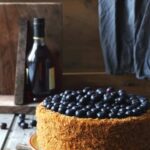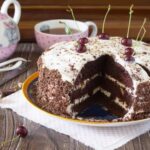Imagine a beautifully crafted cake adorned with vibrant, delicate flowers delicately cascading down its sides. It seems like an idyllic dream, doesn’t it? Well, this dream can become a reality with the rising trend of decorating cakes with fake flowers.
In recent years, using artificial blooms as cake decorations has gained immense popularity, offering a unique and stunning visual appeal. This blog post will explore the world of cake decoration with fake flowers, providing insights into the different types of flowers available, tips for selecting the right ones for your cake design, methods of attachment, addressing potential concerns and risks, enhancing realism with edible elements, and caring for these exquisite creations.
Decorating cakes with fake flowers offers a multitude of advantages that have caught the attention of both professional bakers and home enthusiasts alike. One obvious advantage is their durability – these long-lasting blossoms don’t wilt or fade over time like fresh flowers do.
Additionally, fake flowers provide an array of color options not limited to seasonal availability, allowing for greater creative freedom when designing cakes for any occasion or theme. Furthermore, unlike natural blooms that may release pollen or have thorns that can potentially cause harm if accidentally ingested or come into contact with sensitive skin while handling the cake, fake flowers eliminate such concerns altogether.
In this comprehensive guide on decorating cakes with fake flowers, we will delve deeper into different aspects of this trending practice. From understanding the various types of fake flowers available in the market to exploring techniques for safely attaching them to cakes without causing damage to the delicate layers or frosting – we’ve got you covered.
So whether you’re curious about trying out this new trend or seeking inspiration for your next cake masterpiece, read on as we embark on this exciting journey into the world where artistry meets nature’s beauty in baked form.
Understanding the Different Types of Fake Flowers Available
Fake flowers can be made from various materials, each with its own advantages and disadvantages when it comes to cake decorating. Understanding the different types of fake flowers available will help you make an informed decision on which ones to use for your cake design.
Silk flowers are a popular choice for cake decorations due to their realistic appearance. Made from polyester fabric, silk flowers offer a soft and delicate texture that closely resembles real flowers. They come in a wide range of colors and styles, allowing for endless possibilities in cake designs.
One advantage of silk flowers is that they can be reused for future cakes if handled with care. However, it’s important to note that some silk flowers may contain wires or other non-edible parts that need to be removed before placing them on the cake.
Foam flowers, also known as polyethylene or EVA foam flowers, are lightweight and easy to work with. These artificial blooms are made from a material similar to craft foam and can be shaped and molded into various floral designs. Foam flowers are ideal for creating intricate decorations such as cascading arrangements or elaborate flower crowns on cakes. They are typically safe for consumption as they do not contain any wires or harmful chemicals.
Plastic flowers, on the other hand, are durable and long-lasting but may not have the same level of realism as silk or foam options. These artificial blossoms are made from PVC or other synthetic materials and come in a variety of shapes, sizes, and colors.
Plastic flowers are often used as budget-friendly alternatives for cake decorations but may not be suitable for more intricate designs. It’s important to thoroughly clean plastic flowers before using them on cakes to ensure that no harmful substances or residues come into contact with the edible components.
| Type | Advantages | Disadvantages |
|---|---|---|
| Silk Flowers | Realistic appearance, reusable | May contain non-edible parts |
| Foam Flowers | Lightweight, easy to shape | Not as realistic as silk flowers |
| Plastic Flowers | Durable, budget-friendly | Might not be as realistic, requires thorough cleaning |
When choosing the best type of fake flowers for cake decorating, it’s important to consider factors such as the desired level of realism, the overall design of the cake, and personal preferences. Experimenting with different types and combinations can help you achieve the perfect look for your cake while ensuring that it remains safe to consume.
Preparing Fake Flowers for Cake Decorating
When using fake flowers to decorate a cake, it is important to properly prepare them to ensure they are safe for consumption. Here are step-by-step instructions on how to clean and sanitize fake flowers:
- Remove any dust or debris: Gently brush off any visible dust or debris from the fake flowers using a soft-bristle brush or a microfiber cloth.
- Rinse with water: Fill a sink or basin with lukewarm water and submerge the flowers. Gently swish them around to remove any remaining dirt or particles. Avoid using hot water as it can damage certain types of fake flowers.
- Use mild soap solution (optional): If the fake flowers are particularly dirty or stained, you can create a mild soap solution by mixing a small amount of gentle liquid dish soap with water. Submerge the flowers in this solution and gently agitate them for a few minutes. Rinse thoroughly with clean water afterwards.
- Sanitize with vinegar solution: Create a sanitizing solution by combining equal parts white vinegar and water in a spray bottle. Lightly mist the fake flowers, making sure to cover all areas. This will help eliminate bacteria and lingering odors.
- Air dry: Place the fake flowers on a clean towel or paper towel in a well-ventilated area, away from direct sunlight. Allow them to air dry completely before using them on your cake.
It is important to note that safety precautions should be taken when using fake flowers on edible items like cakes:
- Ensure the fake flowers have not been treated with any toxic chemicals or pesticides. Look for labels indicating that they are food-safe.
- If possible, choose artificial flowers specifically designed for cake decorating purposes.
- Consider wrapping flower stems in food-safe plastic wrap or inserting them into floral tubes to prevent direct contact between the artificial materials and the cake.
By following these steps, you can confidently use fake flowers to decorate your cakes, knowing that they have been properly cleaned and prepared for consumption.
Selecting the Right Fake Flowers for Your Cake Decoration
When it comes to decorating a cake with fake flowers, selecting the right ones is crucial to achieving a stunning and cohesive design. This section will provide guidance on how to choose the perfect fake flowers for your cake decoration.
Factors to Consider
When selecting fake flowers for cake decoration, there are several factors to consider. The first is the color scheme of your cake. You want the flowers to complement the overall color palette and enhance the overall aesthetic. Consider whether you want contrasting or complementary colors, and ensure that the flowers will not clash with any other decorations on the cake.
The theme and style of your cake should also be taken into account. For example, if you have a rustic-themed cake, opting for wildflowers or dried-looking fake flowers can create a beautiful and authentic look. On the other hand, if your cake has a modern design, you may want to choose sleeker and more minimalistic flower styles.
Complementing Cake Design
To create a cohesive look, it’s important to select fake flowers that complement the overall design of your cake. Consider the shape and size of your cake tiers as well as any other decorations that will be present. If you have intricate piping or fondant work on your cake, choosing smaller and more delicate flower arrangements may be best so as not to overpower other elements.
Experimenting with different flower arrangements can help determine which ones work best for your specific cake design. Play around with different combinations, heights, and placements before settling on a final arrangement.
Specific Flower Arrangements
Depending on the style of your cake, certain flower arrangements may work better than others. For example:
- For a rustic-themed cake: Consider using wildflowers mixed in with greenery for an organic feel.
- For a modern-themed cake: Opt for minimalist arrangements featuring single stems or small clusters of flowers.
- For a traditional-themed cake: Classic flowers such as roses or peonies arranged in a round or cascading pattern can add an elegant touch.
By carefully considering color schemes, themes, and styles, you can select the perfect fake flowers to enhance your cake decoration. The next section will discuss how to attach these flowers securely to your cake without causing any damage.
Attaching Fake Flowers to Cakes
Different Methods of Attachment
When it comes to attaching fake flowers to cakes, there are several methods you can use depending on your preference and the design of the cake. One common method is using wires to secure the flowers in place.
To do this, gently insert a floral wire into the stem of each fake flower, making sure it is long enough to extend into the cake without touching the edible parts. You can then position and arrange the wired flowers on top of the cake as desired.
Another option is to use toothpicks as a means of attachment. Simply insert a toothpick into the base or stem of each fake flower and carefully press it into the cake. This method works well for smaller flowers or when you want to attach them at different angles.
If you prefer not to penetrate the cake itself, you can use edible glue to adhere the fake flowers directly onto its surface. Edible glue is a safe and food-grade adhesive that allows you to securely attach decorations without any risk of contamination. Apply a small amount of edible glue onto both the back of each flower and the area where you want it placed on the cake, then press it firmly into position.
Securing Without Damage
While attaching fake flowers to cakes, it’s important to take steps in order to prevent any damage or interference with both your decoration and its edibility. If using wires, be sure they are wrapped in floral tape before insertion to avoid any contact with food. Additionally, try positioning wires near dowels inserted into your cake for stability.
When inserting toothpicks, make sure they are completely covered by stems or petals so they don’t come into contact with anyone consuming the cake. Take care not to push toothpicks too far down, as this could damage layers of frosting or even pierce through fondant coverings.
Using edible glue provides an alternative method that minimizes any risk of damage to the cake. Apply a thin layer of glue to the back of each flower before gently but firmly pressing it onto the designated area. This ensures that the flowers will stay securely in place without any damage to the cake’s integrity.
Arranging Flowers Aesthetically
Arranging fake flowers on a cake is an opportunity to get creative and enhance its overall aesthetic appeal. Consider the composition, color scheme, and theme of your cake when selecting and arranging your flowers. For example, if you have a rustic-themed cake, opt for wildflowers or greenery such as eucalyptus branches to create a natural and organic feel.
When arranging multiple fake flowers, it’s best to stick with odd numbers for visual balance. Experiment with different heights and angles to create depth and dimension in your design. Placing larger flowers at focal points like the center or top of the cake can draw attention and add drama.
Remember to step back occasionally throughout the process to assess how your arrangement looks from different angles. Make any adjustments as needed until you achieve an aesthetically pleasing result that complements your overall cake design.
Addressing Potential Concerns and Risks
When it comes to decorating cakes with fake flowers, there are a few concerns and risks that need to be addressed. It’s important to consider the potential allergies, ingestion of flower parts, and food safety regulations. By taking certain precautions, you can ensure the cake remains safe to consume despite the presence of fake flowers.
One common concern is allergies. Some individuals may have allergies or sensitivities to certain types of flowers or materials used in fake flowers. It’s important to inform your guests about the presence of fake flowers on the cake so they can make an informed decision about consuming it. Additionally, if you are aware of any specific allergies among your guests, you may want to avoid using fake flowers that contain those allergens.
Another concern is the ingestion of flower parts. While most fake flowers are not toxic, it’s still important to take precautions when using them as cake decorations. Make sure to remove any stems or wire attachments from the flowers before placing them on the cake. If there are any small parts that could potentially detach from the flower, such as petals or stamens, it’s best to remove those as well.
Food safety regulations are also a consideration when using fake flowers on cakes. In some regions, there may be specific guidelines regarding what materials can come into contact with food. It’s important to research and comply with these regulations when using fake flowers as cake decorations. Look for options that are labeled as food-grade or safe for edible use.
By addressing these concerns and risks, you can enjoy decorating cakes with fake flowers while ensuring the safety of your guests. Just remember to inform your guests about the presence of fake flowers and take necessary precautions such as removing any potentially harmful parts from the flowers before placing them on the cake.
Enhancing the Realism
When decorating a cake with fake flowers, adding edible elements can enhance the overall realism and create a visually stunning design. By combining both fake and edible flowers, you can achieve a more dynamic and captivating cake decoration. Here are some ideas and techniques to consider when incorporating edible elements alongside fake flowers:
- Sugar Flowers: One popular option is to use sugar flowers alongside the fake ones. These delicate and intricate creations are entirely edible and can be crafted in various colors and designs to match the cake’s theme. Sugar flowers not only add depth and texture but also provide an extra element of indulgence for those who wish to enjoy a piece of the decoration along with their slice of cake.
- Edible Glitter: Another way to enhance the realism of your cake design is by incorporating edible glitter. This shimmering powder adds a touch of sparkle to your fake flowers, making them appear more vibrant and lifelike. Edible glitter is available in different colors, allowing you to match it with the color scheme of your cake.
- Fresh Herbs or Greens: To bring a touch of freshness to your cake decoration, consider using fresh herbs or greens alongside the fake flowers. This works especially well for rustic-style cakes or nature-themed designs. Some options include mint leaves, rosemary sprigs, or ivy vines carefully placed between the flower arrangements.
- Candied Petals: For an added touch of sweetness and whimsy, you can consider using candied petals as accents alongside the fake flowers. Edible flowers such as pansies or violets can be coated with sugar syrup or egg whites then left to dry, resulting in beautifully preserved petals that complement the appearance of the artificial blooms.
To achieve a harmonious balance between the fake and edible elements on your cake, it’s essential to consider color coordination and placement. Ensure that the colors of the edible elements complement or match the color scheme of your fake flowers. Additionally, strategically placing the edible elements throughout the cake will help create a visually pleasing arrangement.
To provide inspiration and examples, consider sharing images or links to cake decorations that successfully combine both fake and edible flowers. This way, readers can visualize how these techniques can transform a cake into a stunning centerpiece.
Remember that when using edible elements alongside fake flowers, it’s crucial to let guests know which parts of the decoration are safe to consume. Place small signs or labels next to the cake indicating which elements can be eaten and which should be removed before consuming. By providing clear guidance, you can ensure your cake decoration is both visually appealing and safe for consumption.
Caring for Cakes Decorated with Fake Flowers
Decorating a cake with fake flowers can create a stunning and unique centerpiece that adds elegance and charm to any occasion. However, it is essential to take proper care of these cake decorations to ensure their longevity and preserve the overall appearance of the cake. In this section, we will discuss some key tips for caring for cakes decorated with fake flowers.
Firstly, it is crucial to store the cake properly to avoid any damage to the delicate fake flowers. Keep the cake in a cool and dry place away from direct sunlight or excessive heat, as this can cause the flowers to wilt or lose their color. If possible, refrigerate the cake but be sure to protect it from moisture by placing it in an airtight container.
When transporting a cake decorated with fake flowers, extra care should be taken. Make sure the flowers are securely attached to the cake before moving it. Consider using a sturdy box or cake carrier with proper support to prevent any shifts during transportation that could damage the delicate flower decorations.
Additionally, regularly check for any signs of wear or damage on the fake flowers. Over time, petals may become loose or detach from their stems. It is important to fix these issues promptly by gently reattaching them with edible glue or replacing them if necessary. Regularly inspecting and maintaining the fake flowers will help ensure that your cake remains visually appealing and intact.
In conclusion, decorating a cake with fake flowers offers endless possibilities for creating beautiful and personalized designs. By following these tips for caring for cakes decorated with fake flowers, you can enjoy your creation while maintaining its pristine appearance. Remember to store the cake properly, handle it with care during transportation, and regularly inspect and repair any worn or damaged flower decorations. With proper maintenance, your cake will continue to amaze guests long after it has been enjoyed.
Frequently Asked Questions
How do you put fake flowers on a cake?
To put fake flowers on a cake, it’s important to first ensure that the flowers are food-safe and specifically designed for use on cakes. You can start by carefully selecting the artificial flowers that match your desired cake design. Before placing them on the cake, it is recommended to clean the flowers thoroughly to remove any potential contaminants.
Additionally, you may want to trim the stems to an appropriate length and possibly reinforce them with floral wire to make them more stable. When placing the fake flowers on the cake, gently insert them at a slight angle into the frosting or directly onto a non-toxic flower pick or cocktail stick for added support.
Can you use fake flowers on cakes?
Yes, fake flowers can be used on cakes. Using artificial flowers offers several advantages, such as durability and flexibility in terms of design options and color choices not commonly found in fresh blooms.
Fake flowers also eliminate concerns about wilting or potential allergenic reactions from guests who may have sensitivities towards certain real flowers. However, it’s crucial to ensure that the synthetic blooms are made from food-safe materials and are properly cleaned before decorating the cake.
Should you put fresh or fake flowers on a cake?
The decision between using fresh or fake flowers on a cake depends on personal preference and specific considerations for your occasion. Fresh flowers can add a touch of elegance and natural beauty to a cake while providing a fragrant aroma as well. They work best when they are free of pesticides or chemicals that could potentially contaminate the cake surface if not properly prepared.
On the other hand, some people prefer using artificial flowers as they offer longer-lasting decorations that won’t wilt or droop over time. It’s important to note that when choosing either option, ensuring proper cleaning and sanitation protocols are followed is essential for ensuring food safety standards are upheld when incorporating any type of flower into a cake design.

Welcome to my blog about home and family. This blog is a place where I will share my thoughts, ideas, and experiences related to these important topics. I am a stay-at-home mom with two young children. I hope you enjoy reading it! and may find some helpful tips and ideas that will make your home and family life even better!





